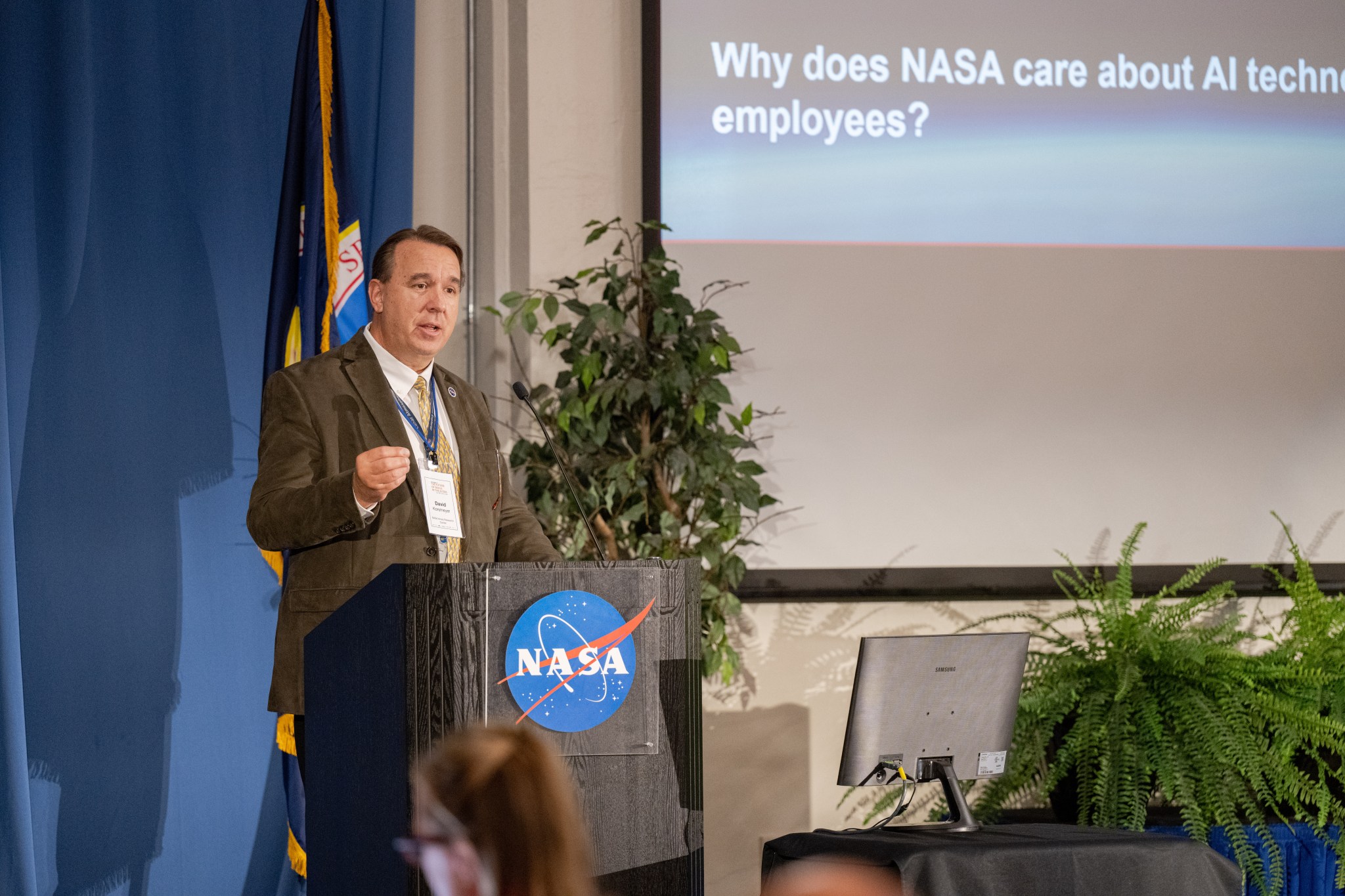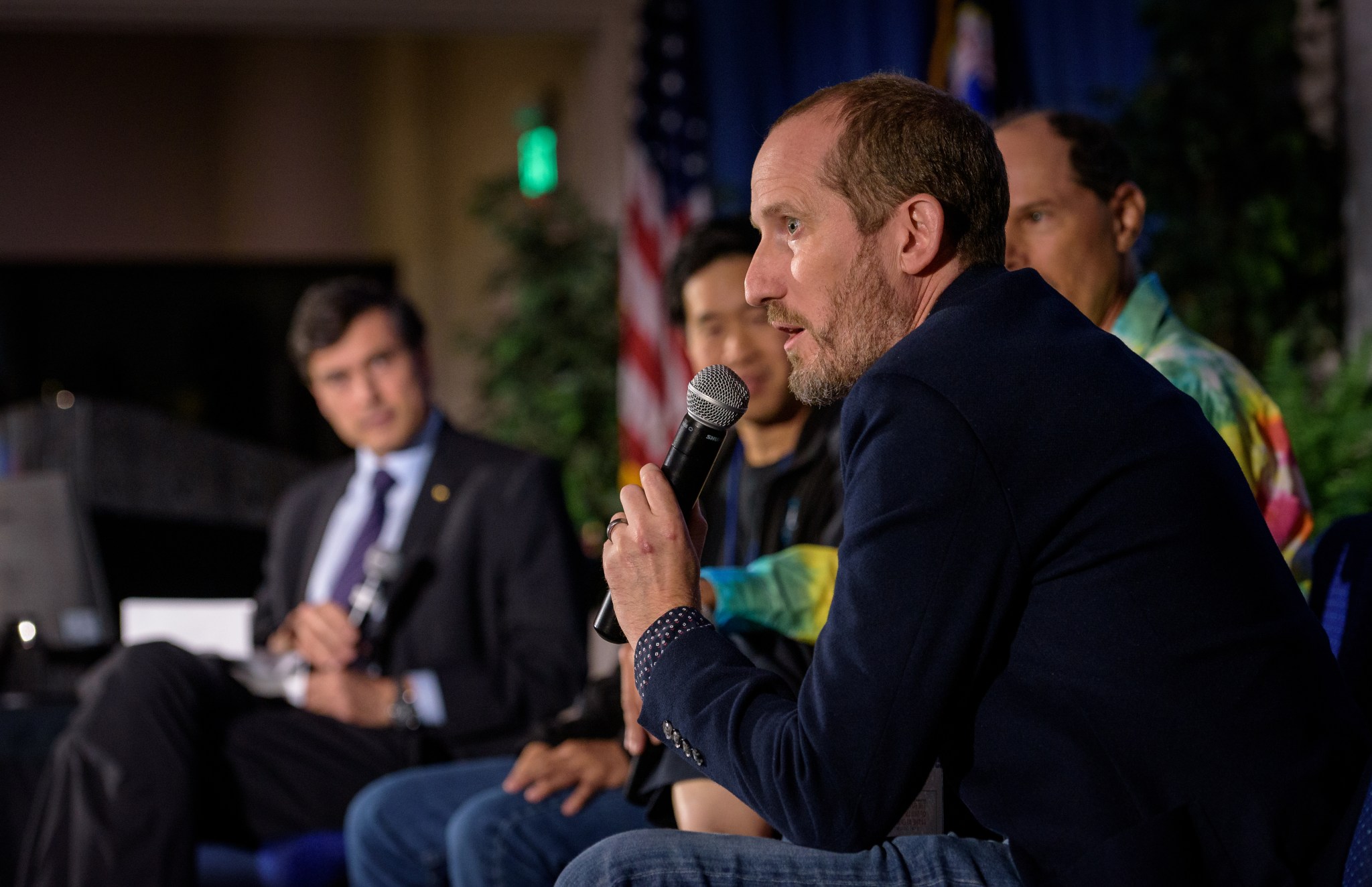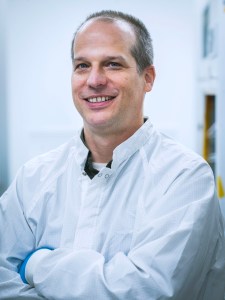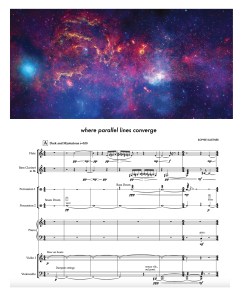3 min read
NASA and UC Berkeley Host Discussion on the Future of AI at Work

What does the rise of artificial intelligence mean for the workers of tomorrow? What could it mean for NASA?
Leaders from government, academia, and commercial industries gathered earlier this fall to learn, discuss, and collaborate at the inaugural “The Future of Skills in the AI Era” symposium at NASA’s Ames Research Center in California’s Silicon Valley. The one-day event was organized by Ames, UC Berkeley’s Fisher Center for Business Analytics in the Haas School of Business, and the new College of Computing, Data Science, and Society.
The event sought to drive dialogue around what the future of artificial intelligence could look like across different sectors and solutions for possible challenges. David Korsmeyer, Ames’ acting deputy center director, spoke to attendees about the history of AI and autonomous technology at NASA and how the agency could use it in the future. He highlighted the ways AI could support work on Earth.
“AI tools can help parse through massive amounts of data and bring trends and information to light,” said Korsmeyer, who also discussed the role AI would play in future space exploration, including pre-training spacecraft to identify potential hazards and make decisions autonomously. “When planning missions to places like Mars, a spacecraft and its crew must be ‘Earth independent’ – it can’t come back, there’s no turning around.”

The role of AI as a tool for school and business was a key theme of the symposium. Annette Bernhardt, director of the technology and work program at the UC Berkeley Labor Center, emphasized the balance between worker privacy and the benefit of highly productive AI tools. Frederick Wehrle, associate dean for academic affairs at UC Berkeley, spoke about the future of education in the era of advancing technology innovation.
Alonso Vera, NASA Ames senior scientist for distributed collaborative systems, dug deeper into the relationship between humans and AI, and the unique roles each needs to play when doing complex work.
“Artificial intelligence is not on the same path as human intelligence. They’re both superior in different ways,” said Vera. “If you don’t understand a human’s role with AI, you won’t be able to develop and improve the right AI technologies.”
AI and autonomous design are embedded in the expanding partnership between Ames and UC Berkeley. The two organizations shared efforts aim to expand learning opportunities in aerospace research and development, including programs like NASA’s Advanced Air Mobility effort, which seeks to develop capabilities for autonomous vehicles to transport cargo and passengers. This area of research is a focus of future collaborations between the two institutions following the recent announcement of plans to develop the Berkeley Space Center at Ames.
For news media:
Members of the news media interested in covering this topic should reach out to the NASA Ames newsroom.
About the Author
Tara Friesen
Share
Details
Related Terms
from NASA https://ift.tt/mW53uwg







